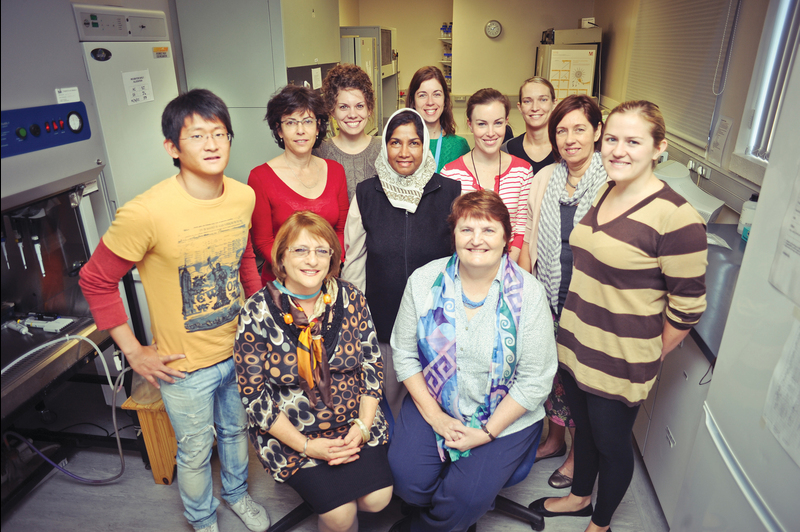Stem cell technology aids disease research
15 April 2013
The use of stem cells to develop 'disease-in-a-dish' models, for studying disease aetiology and for drug screening, is gaining popularity worldwide.
The UCT Stem Cell Initiative, headed by Professors Sue Kidson and Jacquie Greenberg and comprising scientists and students from the departments of cell biology, human genetics, neurology and other departments, is using a groundbreaking new technology, pioneered by 2012 Nobel prize winner Shinya Yamanaka, to turn cultured skin cells into stem cells.
Theoretically, these cells, termed induced pluripotent stem cells (iPSCs), can be differentiated into any cell type in the body, making them an ideal source of cells for the study of diseases affecting inaccessible tissues, such as the eyes and brain. "Since these iPSCs are derived from adult skin, they also bypass many ethical issues associated with embryonic stem cell research," said Kidson.
In collaboration with researchers in Oxford and Japan, scientists from the UCT Stem Cell Initiative have established the first iPSCs from South African patients suffering from the inherited neurodegenerative disease spinocerebellar ataxia type 7 (SCA7). This is one type of ataxia among a group of inherited diseases of the central nervous system. Like many other inherited ataxias, SCA7 stems from genetic defects that lead to the impairment of specific nerve fibres carrying messages to and from the brain. The result is a degeneration of the brain's co-ordination centre, the cerebellum. SCA7 differs from most other forms of spinocerebellar ataxia in that the earliest signs are usually visual problems, rather than poor co-ordination.
The group is also in the process of deriving cells from patients with the neuromuscular disorder myasthenia gravis. Myasthenia gravis is a chronic autoimmune neuromuscular disease characterised by varying degrees of weakness of the skeletal muscles. The SCA7 patient cells have been successfully differentiated into neurons and retinal cells, which are now being used to investigate disease mechanisms in the laboratory.
The stem cell group is in the process of generating stem cell lines for a number of other conditions, which will be used for future investigations into disease modelling and possible therapeutic screening.
 This work is licensed under a Creative Commons Attribution-NoDerivatives 4.0 International License.
This work is licensed under a Creative Commons Attribution-NoDerivatives 4.0 International License.
Please view the republishing articles page for more information.










